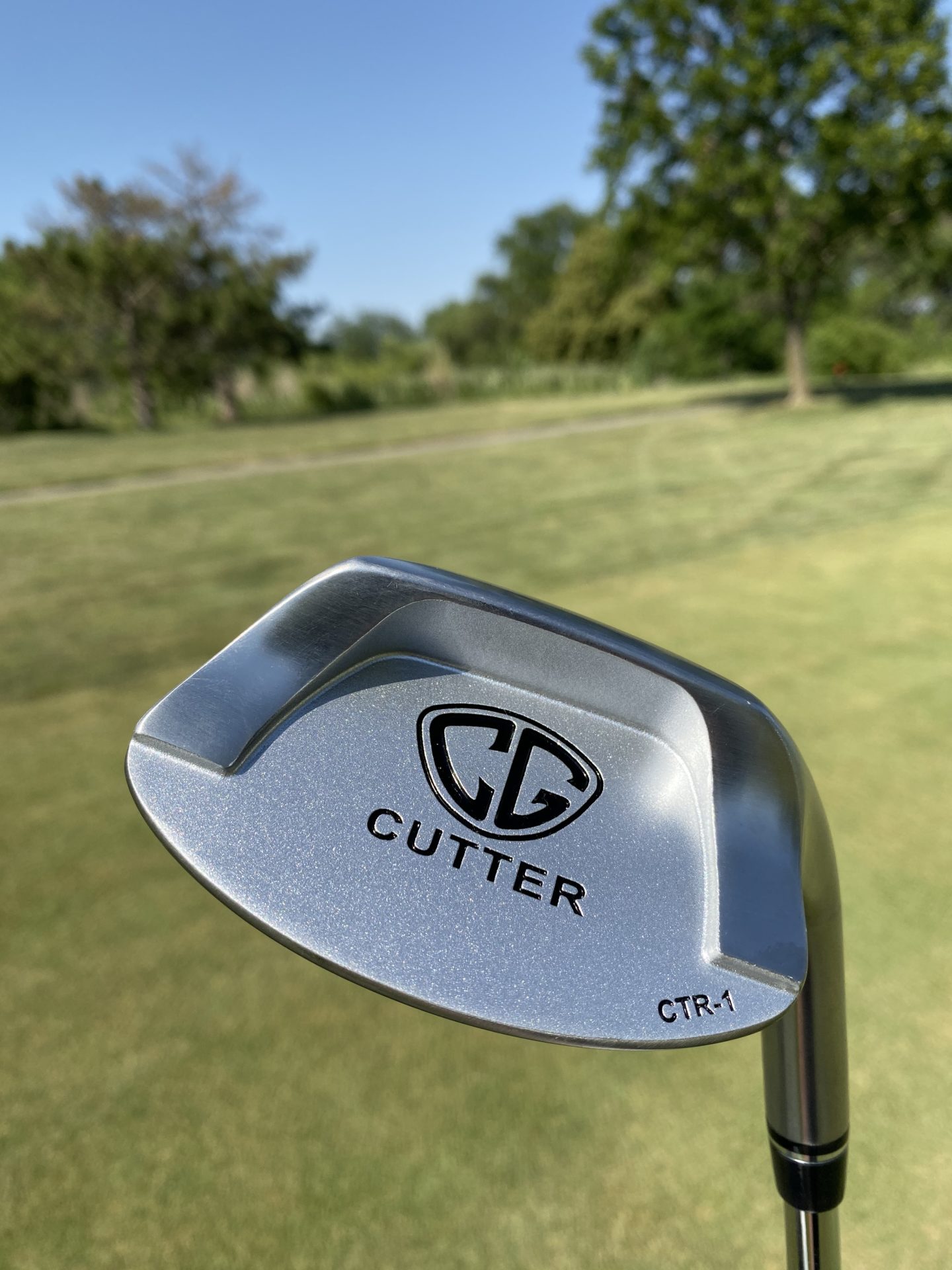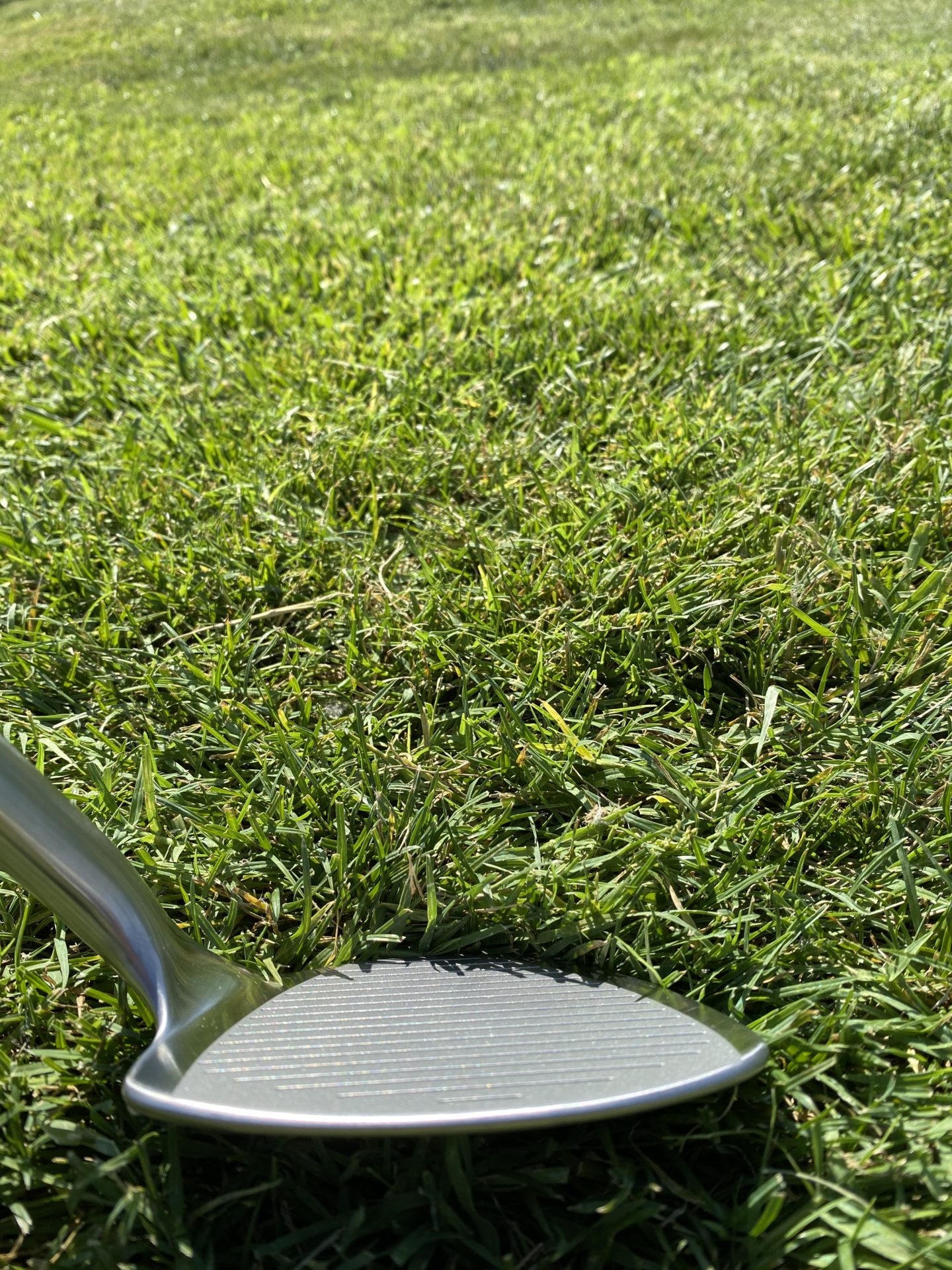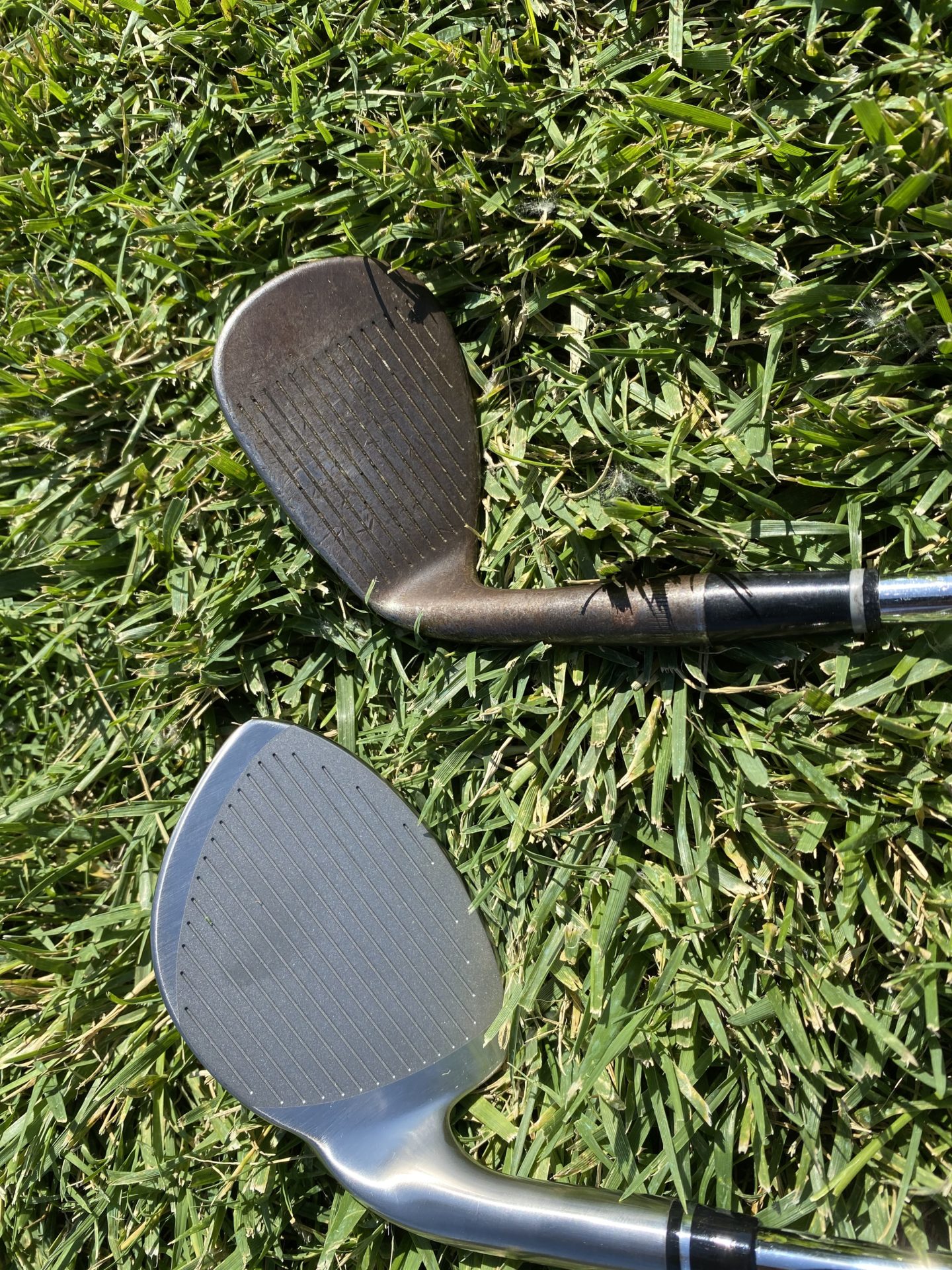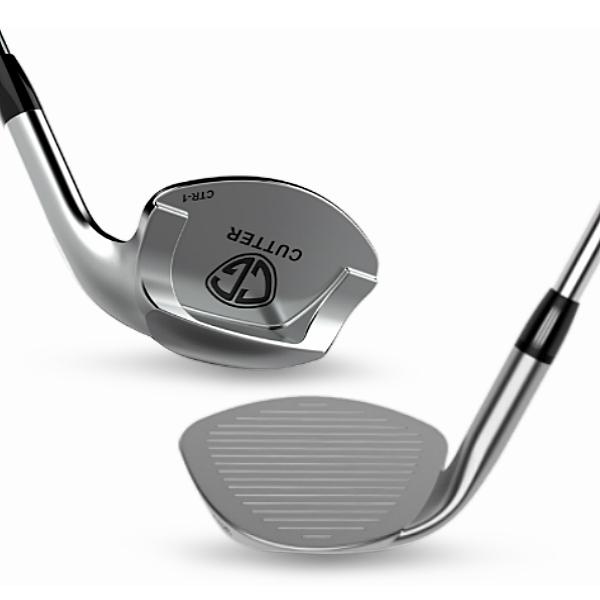The first thing that struck me about Cutter Golf wedges was that they look, well…odd.
I mean, really strange.
I’m pretty confident that any longtime golfer is going to have that same initial reaction.
The shape of the head is just so foreign to what you’re used to looking at when you stand over a golf shot. It looks almost triangular – and huge; totally different from a traditional clubface.
So right off the bat, my skepticism was a bit high.
Before I hit a single shot, I seriously doubted that this club would be an actual candidate to have a home in my golf bag.
I knew from what I’d read and heard about Cutter that there was supposedly some science and proprietary technology that went into this club design. But all golfers have heard plenty of marketing hype about hundreds of products. Not all of them deliver when it comes to actual performance.
But, hey, I like to consider myself an open-minded guy. And I’m certainly up for anything that might improve my golf game. So I tried to push past the feelings of cynicism to give this thing a fair shake.
Are Cutter Golf wedges legit?? Or are they yet another gimmick golf product?
Let’s find out.
Cutter Golf: Weird Science
Cutter makes three wedges – a 52 degree, a 56 degree and a 58 degree. The bounce on these three wedges are 10 degrees, 12 degrees and 6 degrees respectively. That’s a fairly common range of loft and bounce in a set of off-the-rack wedges.
For the purposes of this review, I checked out the 52-degree wedge.
And that’s where “common” stops being relevant to this conversation.
All three of the cutter wedges have the same (I’m just gonna go ahead and call it like it is) “weird” head shape.

The bottom or leading edge of the Cutter wedge is rounded off and small, compared to straight and long on a traditional wedge.
Where a traditional wedge is kind of pear-shaped, the Cutter is more like a V shape.
Most wedges have short grooves at the very top. They then get gradually longer as you go down the face until after the sixth or seventh groove, they are all the same length.
With the Cutter, the grooves are short at the top and bottom. Going up and down the face, the grooves increase in length, with the longest grooves at the center of the clubface.
The idea of the Cutter wedge came about when designer and Cutter founder Dickie Walsh realized that when you lift the heel of a wedge off the ground, the clubface has a V shape at the bottom, which he discovered through the grass better.
He took that realization and created a club that has that V shape even when the sole is sitting flat on the ground. He did that by creating a crescent-shaped sole that makes for a much smaller leading edge – 66 percent less than on a traditional wedge according to the Cutter website.

The intention was to create a wedge that better cuts through all kinds of lies, including deep rough. Hence the name “Cutter.”
Cutter also claims that their wedges have a 75 percent bigger sweet spot. I can’t validate that exact number, but the face on this club is giant compared to a more traditional wedge. I suppose it stands to reason that a bigger overall surface will produce a bigger center or sweet spot.
They claim that their proprietary sole technology distributes the weight to the center of the face, thereby expanding the sweet spot.
Cutter Golf clubs look weird, we get it. But they might slice through the rough better than any wedge we've ever tested. Desperate for more forgiveness? Give these a look.
But Do Cutter Golf Wedges Work?
I tried the 52-degree wedge, or what I’d consider to be a gap wedge to cover the distances between my 56 and pitching wedge (46 degrees).
To test it, I chose a couple different shots that I might normally hit with that club. I was comparing it to a Callaway forged wedge that I’ve had in my bag for at least seven years.
Full disclaimer: the Callaway grooves at this point are definitely a bit worn. I don’t use the club nearly as often as my 56, and I rarely use it for a sand shot. But still, the grooves aren’t off-the-rack sharp like they were in this case with the Cutter.

I started by hitting shots from a flat lie in the fairway into a traditional back-to-front sloped green. I used Pro-V1s for all of the shots, and I alternated between the two clubs for each shot (one with the Cutter then one with the Callaway, etc.).
I’m not claiming this to be a scientific study (they never are here at Breaking Eighty). This test wasn’t conducted in a lab environment. But I hit the shots on the same day, from the same lies, to the same green. I don’t think there was any variance in wind or temperature between any of the shots. I wiped the face off after each shot to ensure the grooves on both clubs were clean.
So, yeah, “scientific” enough for me to feel comfortable that the findings are legitimate.
I found that I hit the two clubs almost exactly the same, distance-wise. My average with the Callaway after 20 shots was 92 yards, one yard further than the 91 yard average after the 20 I hit with the Cutter.
However, of the 40 shots I hit, seven of the top 10 (as in closest to my target) were with the Cutter.
In other words, the majority of the shots were nearly identical between the two clubs. But I was more prone to hitting better shots with the Cutter.
I was surprised, as I’ve become pretty comfortable with my Callaway.
True To Its Name
But where the real separation came was out of the rough.
I realize it’s much more difficult to replicate exact conditions in the rough compared to in the fairway, but I did my best to create similar lies for each shot. I experimented with everything from first-cut rough to deep, thick, gnarly lies.
What I found was that the deeper the rough, the bigger the advantage was for the Cutter. It just glided through the rough so much more effortlessly. And the clubface remained square, rather than shutting down like so often happens in the thick stuff when the grass grabs the hosel of the club.
I hit 10 shots with each club out of the thickest rough that I could find, and on average, the Cutter wedge shots flew 10 yards further. That might not be a huge difference, but it was enough to get my attention.
The Cutter Wedge – My Final Impressions
I gotta be honest: I had serious doubts that this club was legit.
And while I’m not quite ready to label it a total game-changer, I will say that I was pleasantly surprised.
Distance-wise, I didn’t realize any real difference between the Cutter and the Callaway 52 I’ve been using. In fact, the Cutter flew one yard shorter for me on average from the fairway.
I did, however, hit my best overall shots with the Cutter, which obviously piqued my interest.
But out of the rough is where this thing is magic. If you play a course where the fairways are narrow and the rough is juicy, this club has the potential to save you some shots.
And for anyone who maybe isn’t thrilled with their current wedge game and who is willing to try something new, I think there’s a good chance that whatever might be the cause of your dissatisfaction may in fact be addressed successfully with the Cutter wedge.
It’s certainly different, so if going in a new direction is what you’re looking for, this might be the answer.
But if you’re the type of golfer that’s going to be embarrassed to carry a club that might attract attention or look a bit strange, then this just isn’t an option for you. There’s no getting past the funkiness of the aesthetic.
If you play with friends who like to rib and needle each other, putting this thing in your bag might put a target on your back. But, hey, if you can back it up with shots closer to the pin, you’ll shut ‘em up pretty quickly.
My final verdict: It’s worth a try for the simple reason that it performs better out of the rough. For me, everything else was close enough to equal, but that one game improvement is enough for me to overcome the oddity of the design.
In fact, for me, it’s in my bag for now. This thing works.
Buy the Cutter wedges at playcutter.com.
Cutter Golf clubs look weird, we get it. But they might slice through the rough better than any wedge we've ever tested. Desperate for more forgiveness? Give these a look.
This page contains affiliate links. This means that if you click a link and buy one of the products on this page, I may receive a commission (at no extra cost to you!) This doesn’t affect our opinions or our reviews. Everything we do is to benefit you as the reader, so all of our reviews are as honest and unbiased as possible.


